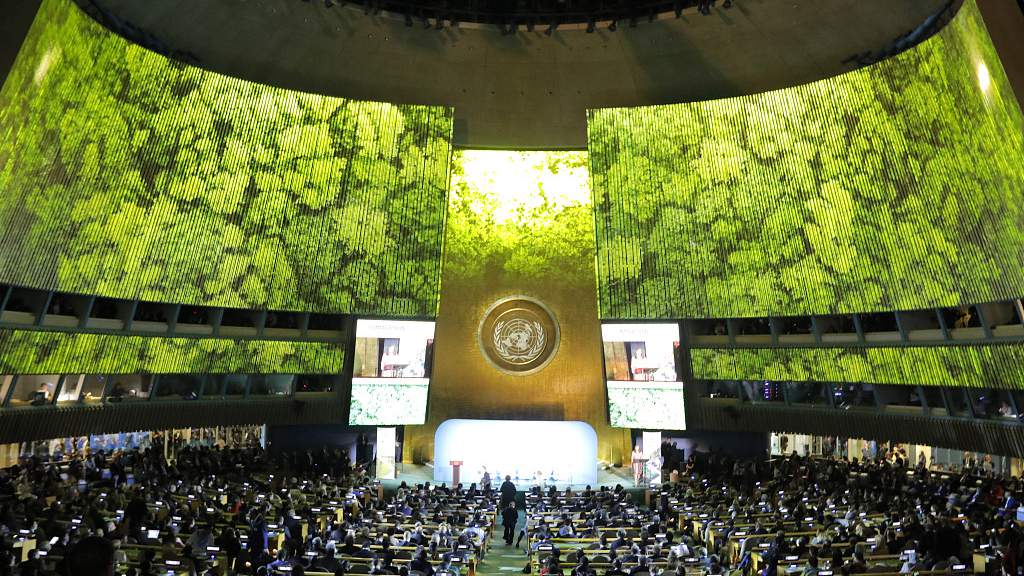
The opening ceremony of the 2019 UN Climate Action Summit, New York, U.S., September 23, 2019. /VCG Photo
The opening ceremony of the 2019 UN Climate Action Summit, New York, U.S., September 23, 2019. /VCG Photo
China has always attached great importance to addressing climate change, and regard it as a great opportunity to achieve high-quality economic development and promote ecological progress, said a paper entitled UN Climate Action Summit: China's Position and Action, released by China ahead of the 2019 UN Climate Action Summit.
The paper detailed the country's efforts in tackling climate change from nine areas, namely Nature-Based Solutions, Social and Political Drivers, Youth and Mobilization, Energy Transition, Industrial Transformation, Infrastructure, Cities and Local Action, Mitigation Strategy, Resilience and Adaptation, and Climate Finance and Carbon Pricing.
It echoed with what Foreign Minister Wang Yi said at the Summit on Monday, that "as a responsible member of the international community, China will honor its word with real actions and make new strides in addressing climate change."
"What youth and grassroots movements are doing today is essential for change in economic systems to deal with climate change," UN Secretary-General Antonio Guterres said during the youth climate summit on September 21.
Young people have grown to be a strong and unstoppable force in pushing forward climate actions. It's probably the first time the world has so many young children and teenagers gathering on the streets demanding climate actions.
Streets in New York, London, Melbourne, Berlin, Nairobi, Manila, Kampala and Rio de Janeiro are crammed with participants holding placards and posters asking governments to take the climate crisis seriously.
Although youth climate protests are rarely seen in China, it does not mean young Chinese do not care about the issue. The numbers in the infographic below are just parts of their efforts over the years.
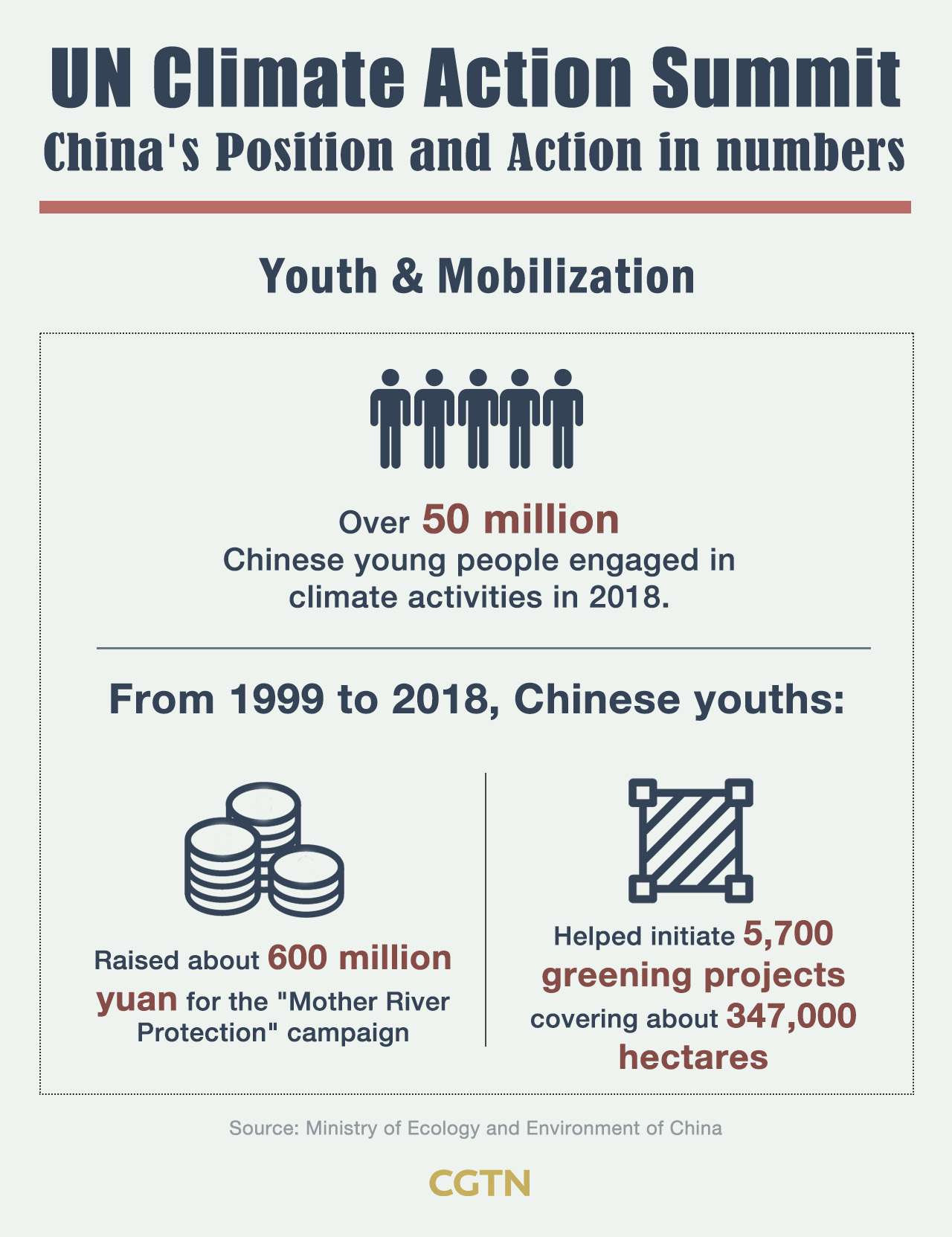
CGTN Infographic by Jia Jieqiong and Fan Chenxiao.
CGTN Infographic by Jia Jieqiong and Fan Chenxiao.
Energy transition & industrial transformation
Speeding up transition from coal to clean energy is also a serious issue. The world is not even remotely close to limiting temperature rise to 1.5 degrees Celsius this century, as laid out by the 2015 Paris Agreement, and energy transition is crucial.
The problem is "we are moving to the right direction but not fast enough," Christiana Figueres, executive secretary of the UN Framework Convention on Climate Change (UNFCC) said at this year's World Economic Forum.
As the world largest energy consumer and also renewable energy producer, China has honored its targets on some of the terms, and has taken a leading role in heading towards a sustainable energy transition path.
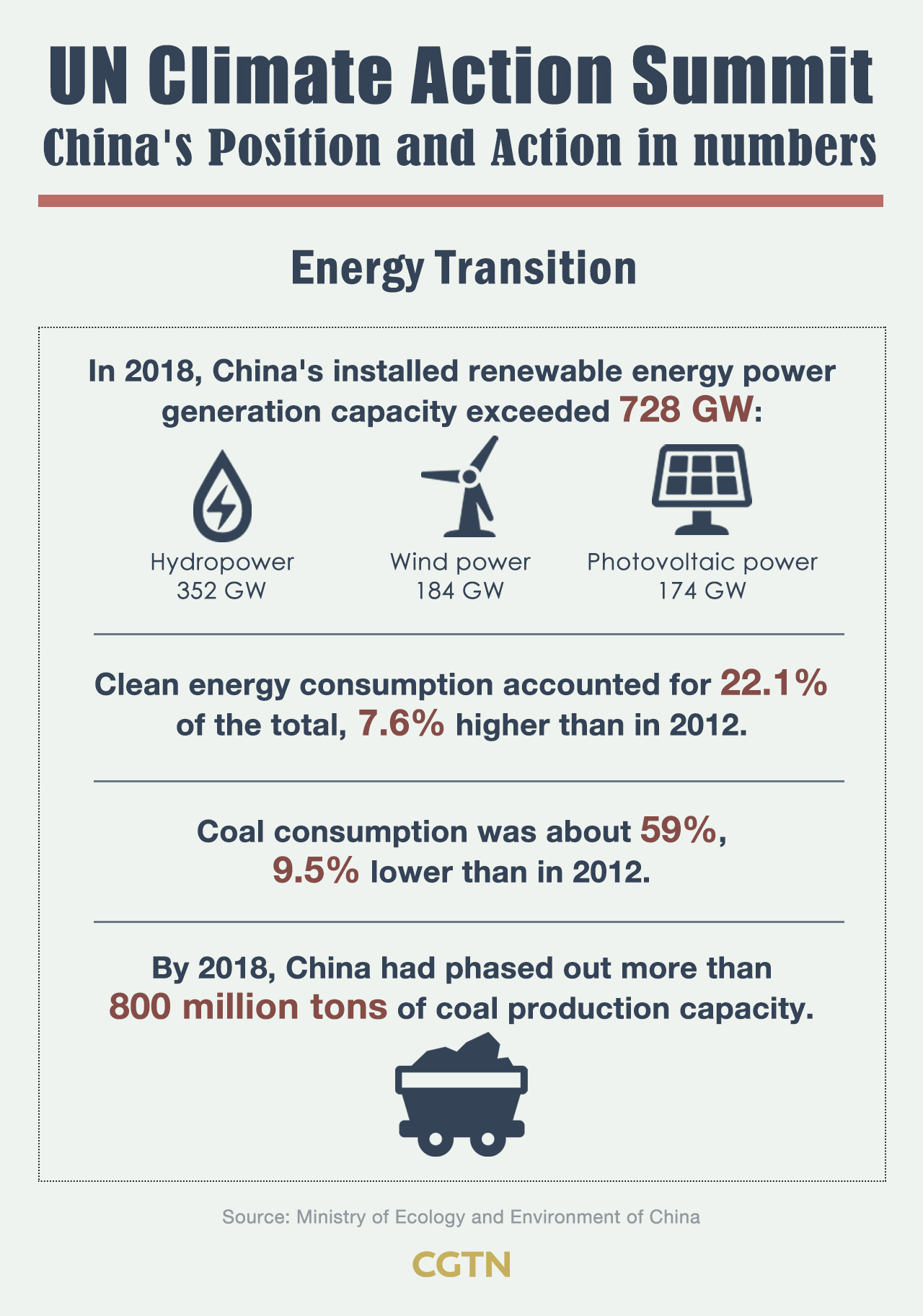
CGTN Infographic by Fan Chenxiao.
CGTN Infographic by Fan Chenxiao.
Industrial transformation has also been added to China's climate portfolio to cut greenhouse gas emissions. From grey to green economies, China's industries have undergone radical changes.
The government has revised energy efficiency standards for traditional sectors like power plants, motor vehicles, buildings and equipment, and enforced laws related to environment protection tax (EPT) to curb air, water, soil, noise pollution and solid waste disposal.
Read more: China enforces environment tax and nuclear safety law
Meanwhile, they have given huge subsidies to energy-saving and new-energy vehicle industries.
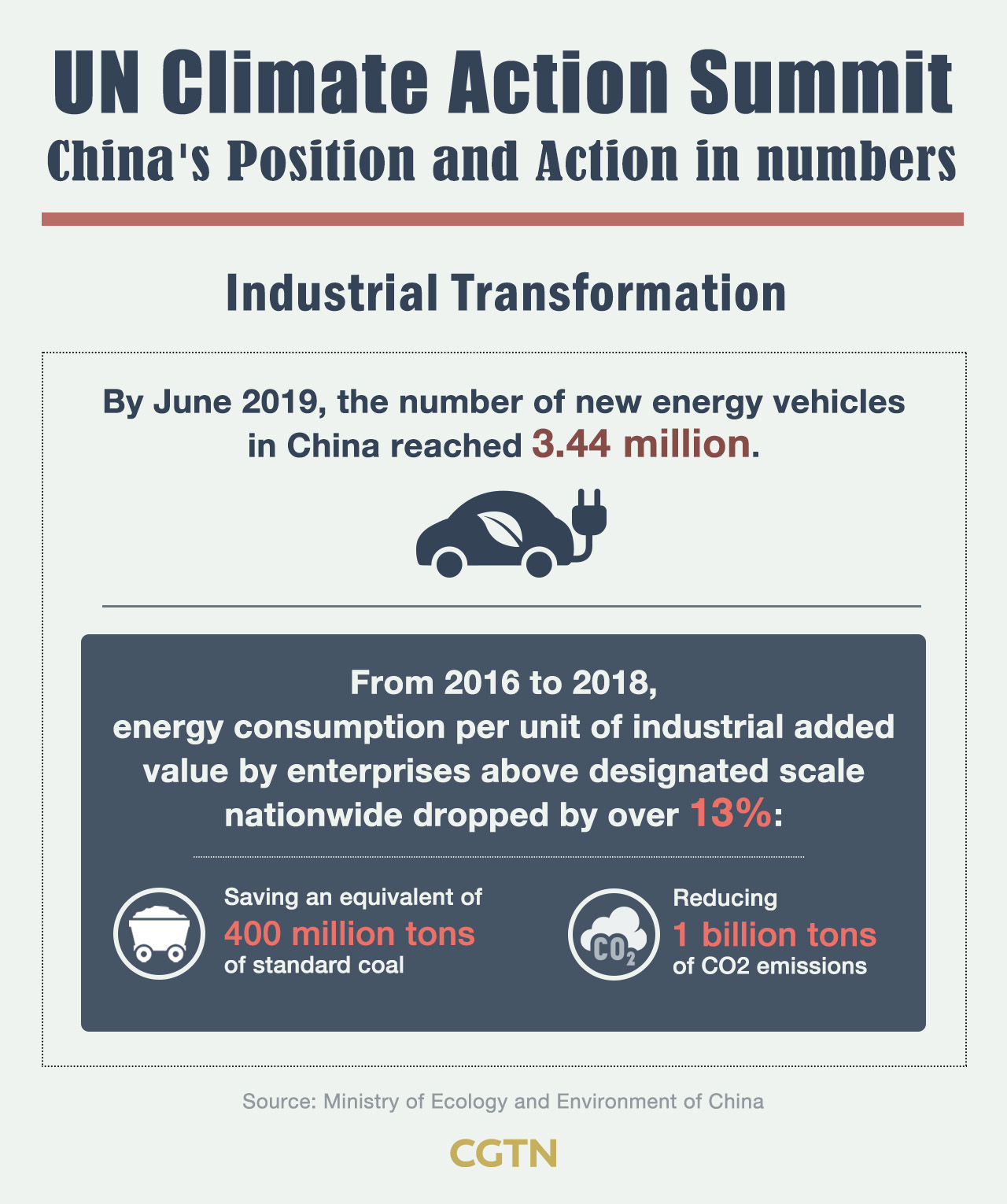
CGTN Infographic by Fan Chenxiao.
CGTN Infographic by Fan Chenxiao.
China will meet its carbon dioxide emission target, nearly a decade earlier than what it committed to in the Paris Climate Change Agreement, according to a study published in journal Nature Sustainability in July.
Last year, China informed the UNFCC that it achieved 2020 carbon emission target three years ahead of schedule.
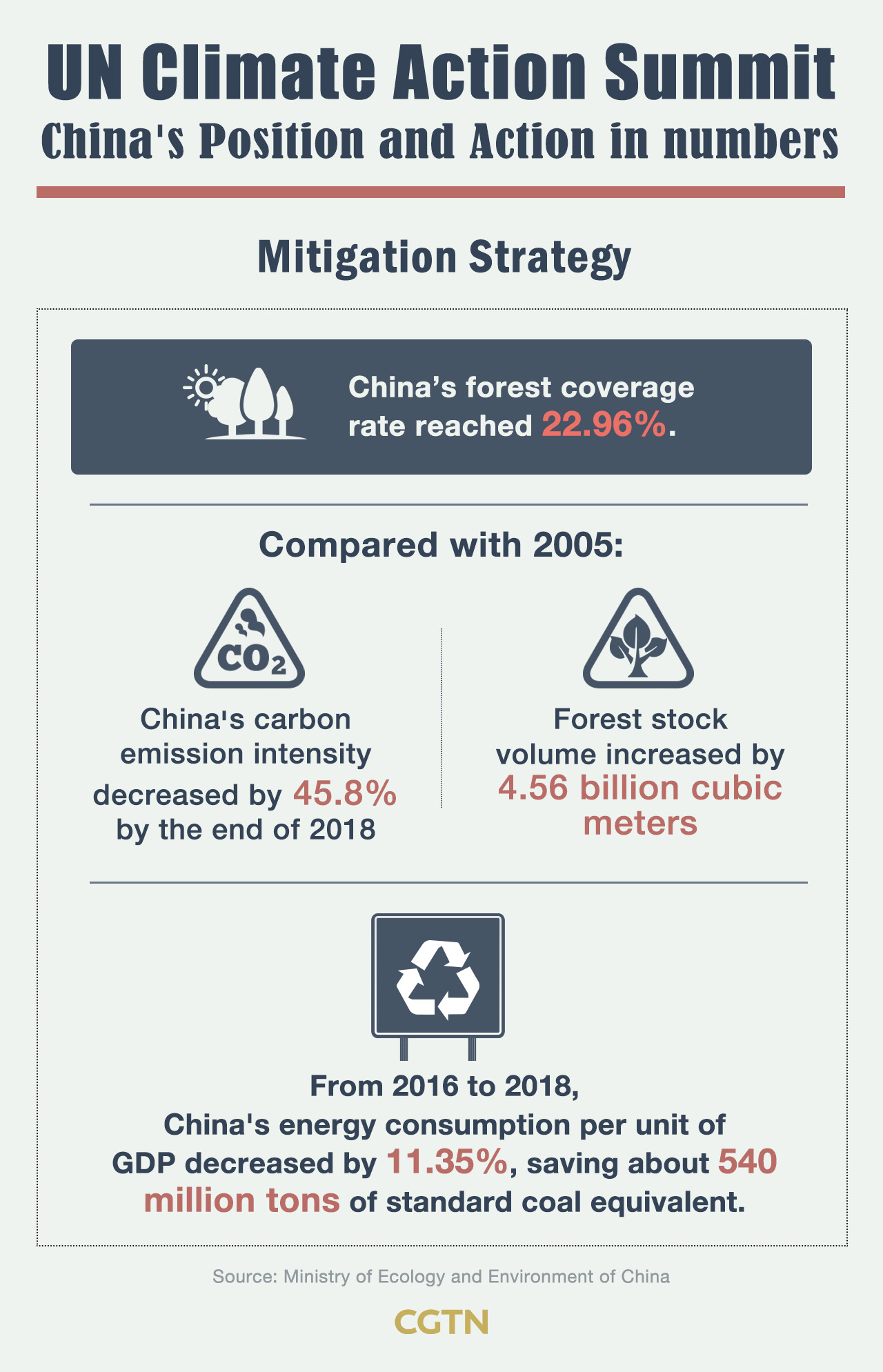
CGTN Infographic by Fan Chenxiao.
CGTN Infographic by Fan Chenxiao.
(CGTN's Guo Meiping, Gao Yun also contributed to this story.)